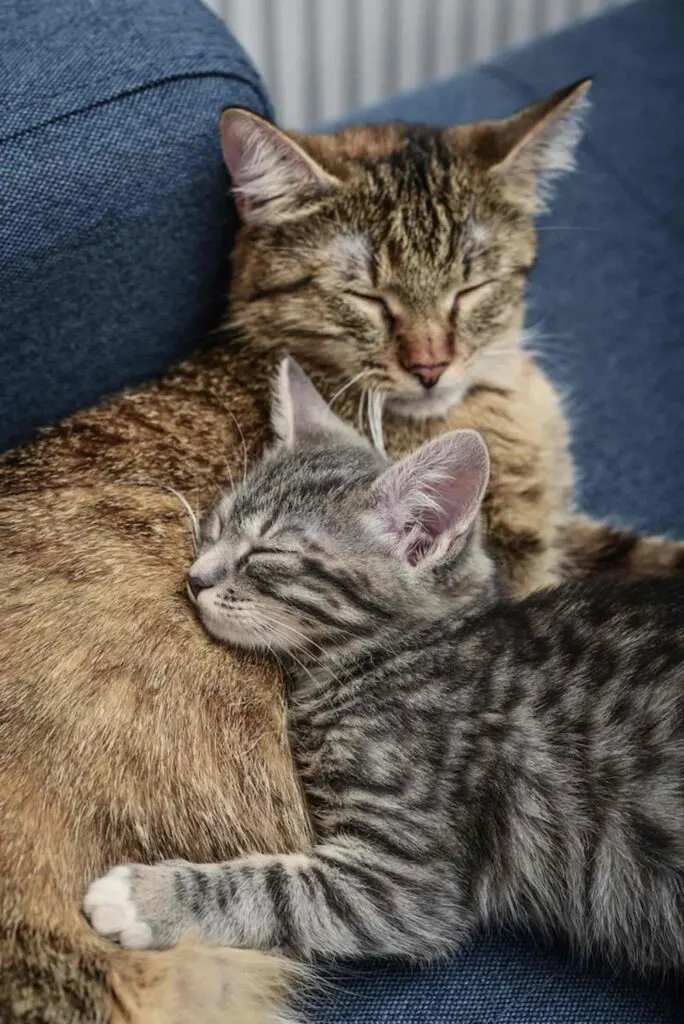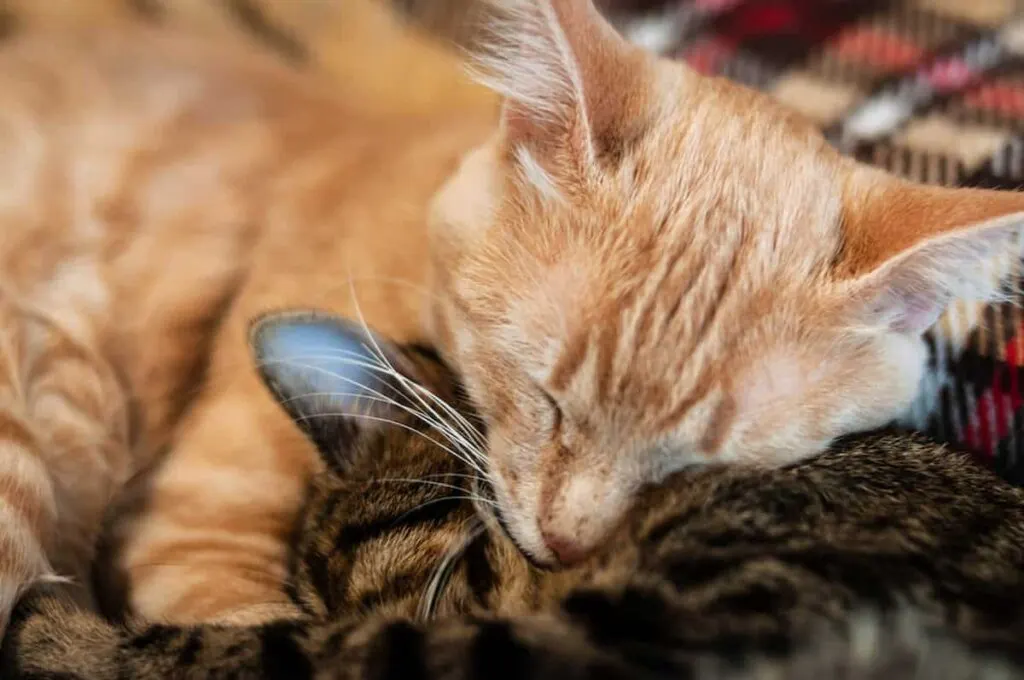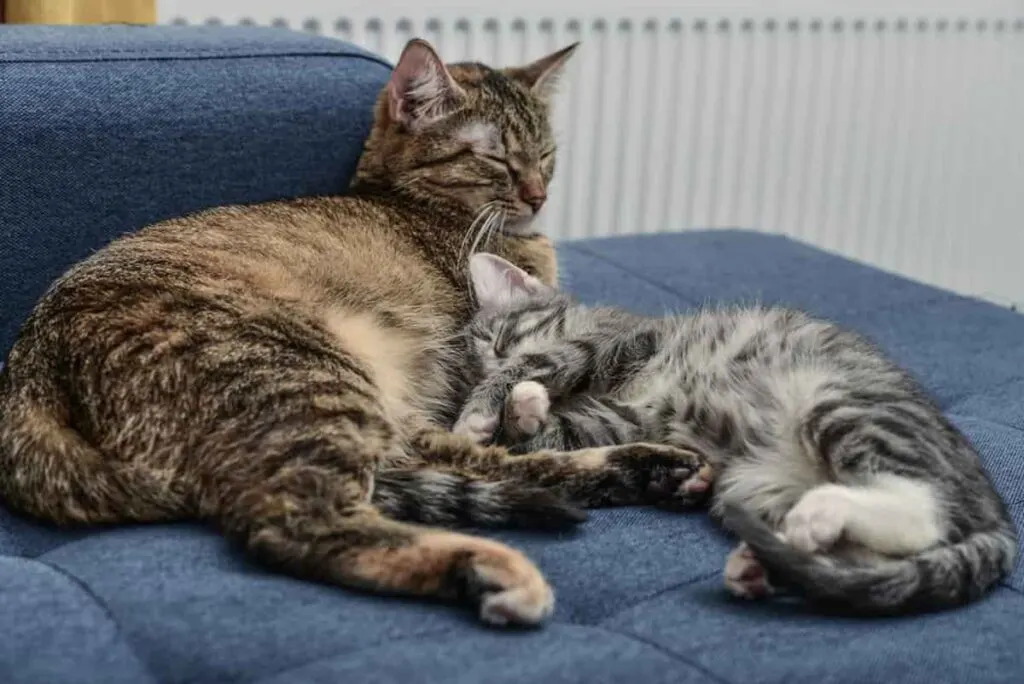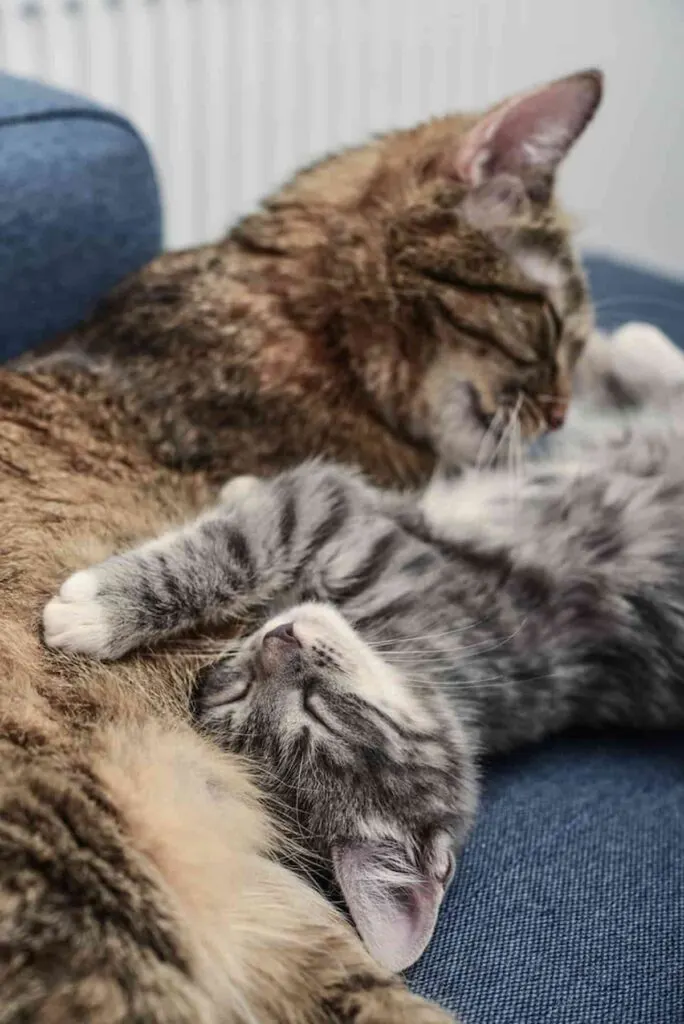One of the biggest challenges of having multiple cats is getting them to sleep together peacefully. While some cats may become fast friends, others may take some time to warm up. Fortunately, there are several steps you can take to help your cats get along better and sleep together. So, how can you get two cats to sleep together?
The key is ensuring they feel safe and comfortable around each other. This can involve providing separate sleeping areas with their own blankets and gradually allowing them to sleep closer together over time with supervision. You can also try using pheromone sprays or diffusers, such as Feliway, to help reduce tension and promote relaxation.
First and foremost, it’s important to understand that cats are territorial creatures by nature. They may view a new cat as a threat to their territory, which can lead to aggression and tension.
To help your cats feel more comfortable around each other, it’s important to introduce them slowly and in a controlled environment.

Creating a Safe and Comfortable Environment
Providing Enough Space
When trying to get two cats to sleep together, it’s important to make sure they have enough space. Cats need their own territory, so providing enough room for them to feel comfortable is important. Ensure they have designated areas for eating, drinking, and using the litter box. Provide multiple scratching posts and toys to keep them entertained.
Providing Comfortable Sleeping Areas
Cats love to sleep in cozy, warm places. Make sure each cat has their own comfortable sleeping area, such as a cat bed or a soft blanket. Cats also love to sleep in high places, so consider providing a cat tree or a shelf for them to sleep on. Make sure their sleeping areas are away from any disruptive noises or disturbances.
Avoiding Disruptive Noises
Cats are sensitive to noise, so avoiding disruptive sounds is important when trying to get them to sleep together. Keep their sleeping areas away from any loud noises, such as a television or a noisy appliance. Consider playing calming music or using a white noise machine to drown out any disruptive sounds.
You can create a safe and comfortable environment for your cats to sleep together by providing enough space, comfortable sleeping areas, and avoiding disruptive noises.
Introducing the Cats to Each Other
Bringing a new cat into a household with an existing cat can be a delicate process. However, the cats can learn to coexist peacefully with patience and a gradual introduction. Here are some tips to help you introduce your cats to each other:

Gradual Introduction
Start by keeping the new cat in a separate room, away from the resident cat. This allows the cats to get used to each other’s scent without feeling threatened. Swap their bedding, toys, and blankets to help them become familiar with each other’s scent.
Gradually introduce the cats to each other by allowing them to sniff each other through a closed door or a baby gate. Depending on the cats’ personalities, this process may take several days or even weeks.
Supervised Interaction
Once the cats are comfortable with each other’s scent, allowing them to interact under supervision is time. Keep the first few interactions short and controlled.
Use toys to distract them and prevent any aggressive behavior. If either cat shows aggression, separate them immediately and try again later. Gradually increase the time the cats spend together, always under supervision.
Feeding and Playing Together
Feeding the cats together can be a great way to promote positive associations. Start by feeding them on opposite sides of a closed door, then gradually move their bowls closer together.
Eventually, you can feed them in the same room. Playing together can also help the cats bond. Use interactive toys to encourage them to play together, but always supervise their playtime.
Remember, introducing cats to each other takes time and patience. It’s important to let the cats set the pace and not force them together too quickly. Your cats can learn to coexist peacefully with a gradual introduction, supervised interaction, and positive reinforcement.

Encouraging Sleeping Together
Getting two cats to sleep together can be challenging, but it is possible with effort and patience. Here are some tips to help your cats feel comfortable and cozy sleeping together.
Positive Reinforcement
Cats respond well to positive reinforcement, so it’s important to reward them when they exhibit good behavior. When your cats sleep near each other, give them treats or toys to reinforce the positive behavior. This will encourage them to continue sleeping together in the future.
Providing Cozy Spots
Cats love cozy spots, so providing them with comfortable sleeping areas can encourage them to sleep together. Consider getting a large cat bed or a cat tree with multiple levels and comfortable sleeping areas. This will give your cats plenty of options for sleeping together.
You can also provide cozy blankets or pillows for your cats. Make sure to wash them regularly to keep them clean and fresh.
Using Feliway or Other Calming Products
Feliway is a synthetic pheromone that can help calm cats and reduce stress. It can be used to help your cats feel more comfortable sleeping together. Spray Feliway in the areas where your cats sleep or use a Feliway diffuser in the room where they sleep.
Other calming products, such as herbal remedies or calming collars, can also effectively reduce stress and encourage cats to sleep together.
Remember, patience is important when encouraging cats to sleep together. It may take some time for them to feel comfortable with each other, but with patience and persistence, they will eventually learn to love sleeping together.

Potential Issues To Watch For Between Both Cats
While it is natural for cats to sleep together, some potential issues may arise when introducing two cats to each other. Here are some things to watch out for:
- Aggression: Cats are territorial animals, and one or both cats may become aggressive toward each other when sharing a sleeping space. This can result in physical fights, hissing, or growling.
- Unequal Dominance: One cat may try to assert dominance over the other, leading to one cat being excluded from the sleeping area or being forced to sleep in an uncomfortable position.
- Separation Anxiety: If one cat becomes too dependent on the other for sleeping, it may experience separation anxiety if the other cat is not present. This can lead to excessive meowing, destructive behavior, or other negative behaviors.
It is important to monitor the cats closely and address any potential issues as soon as they arise. Here are some tips to help prevent or resolve these issues:
- Provide Enough Space: Make sure that there is enough space for both cats to sleep comfortably without feeling crowded or threatened.
- Introduce Slowly: If the cats are new to each other, introduce them slowly and gradually to prevent aggression or dominance issues.
- Provide Separate Sleeping Spaces: If the cats cannot sleep together peacefully, provide separate sleeping spaces for each cat to prevent separation anxiety or other negative behaviors.
- Provide Plenty of Toys and Activities: Keep the cats entertained and engaged with plenty of toys and activities to prevent boredom or frustration, which can lead to negative behaviors.
Following these tips and monitoring the cats closely can help ensure that both cats sleep together peacefully and comfortably.

My name is James, and welcome to FAQCats!
Along with our team of cat owners, expert pet enthusiasts, and pet professionals, we aim to write engaging helpful, engaging content about cats. At FAQCats we strive to provide content that’s accurate and fun to read. Our team writes about everything related to cats; even the most complex of topics. Through extensive research and caring for our own fur-pals, we’re able to provide something cat owners worldwide will love. Have a look around, and leave us feedback anytime!

